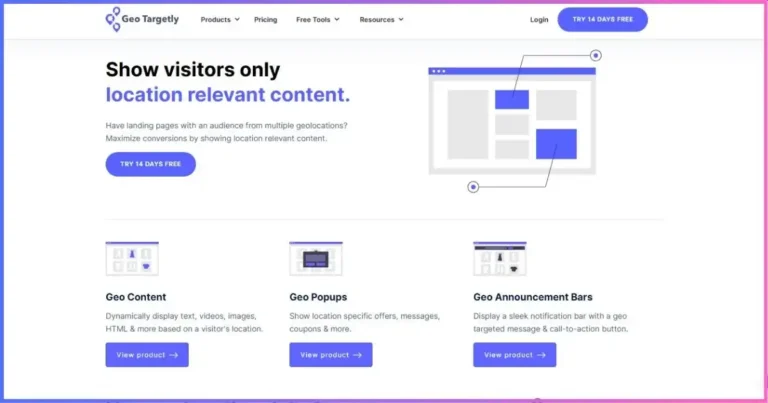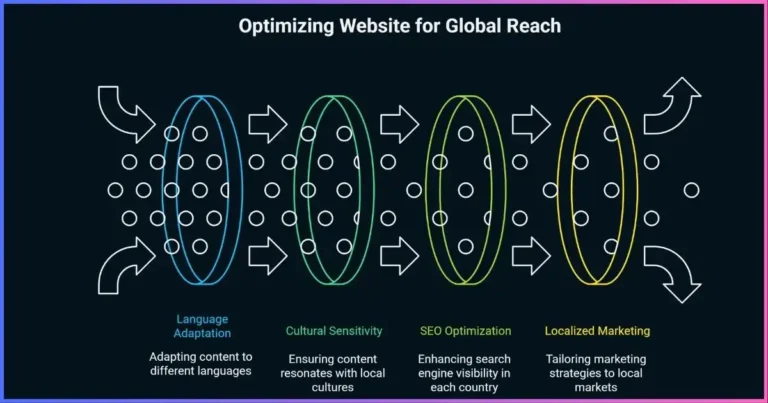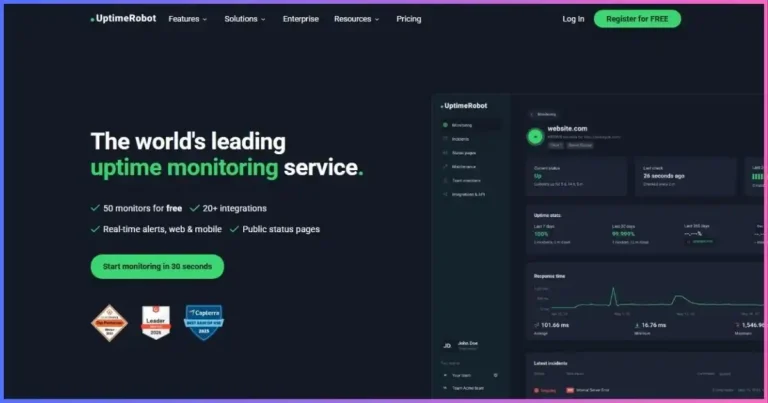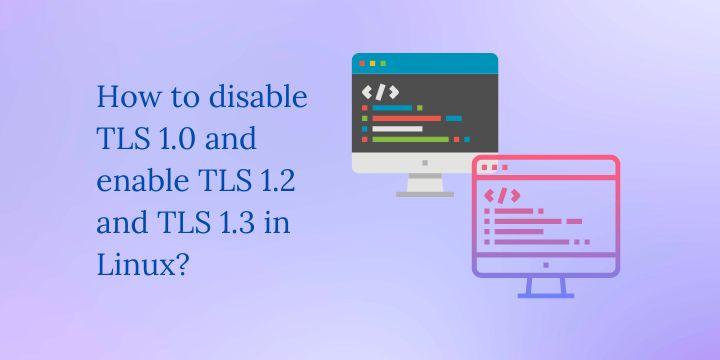How to Utilize Geo-Blocking to Control What Your Visitors Access
A comprehensive guide to implementing geo-blocking technology, protecting your content, and enhancing user experience based on location
Table of Contents
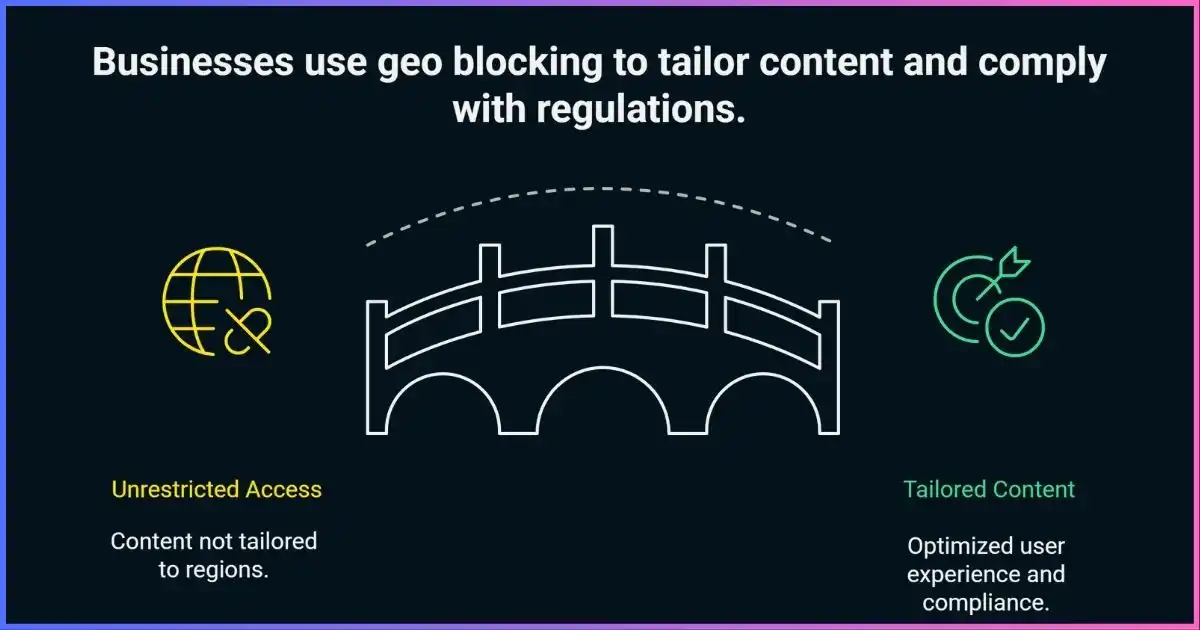
Introduction to Geo-Blocking
Geo-blocking is a powerful technology that enables website owners to control access to their content based on visitors’ geographic locations. This control mechanism allows you to restrict or customize access to your website, specific pages, or particular content depending on where your visitors are physically located. As digital businesses expand globally, geo-blocking has become an essential tool for content management, security enhancement, and regulatory compliance.
In today’s interconnected world, geo-blocking serves various critical purposes, from preventing unauthorized access and protecting against cyber threats to delivering regionally relevant content and complying with territorial licensing agreements. By , over 70% of global businesses with online operations will implement some form of geographic access control to enhance security and provide location-specific experiences.
Whether you’re looking to secure your website against threats from high-risk regions, optimize your content delivery for different markets, or ensure compliance with regional regulations, geo-blocking provides the technical solution you need to implement these controls efficiently.
How Geo-Blocking Works
Geo-blocking technology relies on a process called IP geolocation, which identifies a visitor’s location by analyzing their IP address. Every device connecting to the internet has an IP address, which contains information about its geographic location. Geo-blocking systems use this information to make decisions about access control.
The Geo-Blocking Process:
- IP Detection: When a user attempts to access your website, the geo-blocking system captures their IP address.
- Location Lookup: The system then queries a geolocation database to determine the user’s physical location based on their IP address.
- Rule Matching: The determined location is compared against your predefined rules (allowlists or denylists).
- Access Decision: Based on the rules, the system either grants access, denies access, or redirects the user to alternative content.
Geolocation Methods
Modern geo-blocking systems use several methods to determine a visitor’s location:
IP-Based Geolocation
The most common method, using IP address databases to map visitors to geographic locations. Accuracy at country level is approximately 99%, with city-level accuracy around 70-80%.
GPS Coordinates
For mobile applications, GPS data provides highly accurate location information but requires user permission and is primarily available on mobile devices.
Browser Language
Some systems analyze browser language settings as a secondary indicator of user location, though this method is less reliable on its own.
Network Latency
Advanced systems may analyze network latency to estimate physical distance from server locations, providing additional validation of location data.
Types of Geo-Blocking Implementation
Allowlist (Whitelist) Approach
With this approach, you specify which countries or regions can access your content, and all others are blocked by default. This is useful when you only want to serve specific markets or regions.
Denylist (Blacklist) Approach
In this method, you specify which countries or regions should be blocked, while all others can access your content. This approach is common when blocking high-risk regions or complying with sanctions.
Geo-blocking technology has evolved significantly since its inception. Today’s solutions offer high levels of accuracy, with real-time database updates ensuring your access controls remain effective as IP assignments change worldwide.
Benefits of Implementing Geo-Blocking
Enhanced Security
Block access from high-risk countries or regions known for malicious activities. Studies show businesses using geo-blocking report a 35% reduction in malicious traffic and unauthorized login attempts within the first month of implementation.
Regulatory Compliance
Meet legal requirements for content distribution in different territories. Prevent access to regulated content from regions where it may not be permitted, reducing legal liability by up to 60%.
Targeted Content Delivery
Serve location-specific content to enhance user experience. Companies implementing geo-targeted content report conversion increases of up to 25% compared to generic content approaches.
Performance Optimization
Reduce bandwidth costs and server load by blocking traffic from regions that aren’t part of your target market. Organizations have reported up to 30% reduction in bandwidth costs after implementing geographic access controls.
Copyright Protection
Ensure digital rights management by restricting content access based on licensing agreements for different territories. Content providers report 40% fewer copyright violations after implementing geo-restrictions.
Market Segmentation
Implement different pricing strategies or product offerings based on regional markets. Companies using geo-based market segmentation see up to 20% higher revenue from optimized regional pricing models.
Implementation Methods
Implementing geo-blocking on your website can be accomplished through various methods, depending on your technical requirements, budget, and the level of control you need. Let’s explore the most effective implementation approaches:
JavaScript Implementation
JavaScript-based geo-blocking is relatively easy to implement and can be useful for simple use cases. It works by detecting the user’s browser language or by using third-party geolocation APIs that return the visitor’s location based on their IP address.
Basic Implementation Example:
// Simple geo-blocking script using browser language detection
<script src="geoblock.js" banned="ru, cn, ir" redirect="/blocked.html"></script>
// The geoblock.js script might contain:
document.addEventListener('DOMContentLoaded', function() {
const script = document.currentScript;
const bannedCountries = script.getAttribute('banned').split(',').map(c => c.trim().toLowerCase());
const redirectUrl = script.getAttribute('redirect');
// Get browser language and extract country code
const language = navigator.language || navigator.userLanguage;
const userCountry = language.split('-')[1].toLowerCase();
if (bannedCountries.includes(userCountry)) {
window.location.href = redirectUrl;
}
});For more accurate JavaScript-based geo-blocking, you can use third-party APIs:
Using a Third-Party API:
<script>
// Using a geolocation API to get more accurate results
fetch('https://api.ipgeolocation.io/ipgeo?apiKey=YOUR_API_KEY')
.then(response => response.json())
.then(data => {
const blockedCountries = ['RU', 'CN', 'IR'];
if (blockedCountries.includes(data.country_code2)) {
window.location.href = '/blocked.html';
}
})
.catch(error => console.error('Error:', error));
</script>Note: JavaScript-based solutions can be bypassed by disabling JavaScript in the browser. For more robust protection, consider server-side implementations.
PHP Implementation
Server-side geo-blocking using PHP provides more security as it cannot be easily bypassed by end users. PHP can detect a visitor’s IP address and use either built-in functions or third-party services to determine their geographic location.
Basic PHP Implementation:
<?php
// Define countries to block
$blockedCountries = ["RU", "CN", "IR"];
// Get visitor's IP address
$visitorIP = $_SERVER['REMOTE_ADDR'];
// Use a geolocation service to determine country
$geolocationURL = "http://ip-api.com/json/{$visitorIP}";
$response = file_get_contents($geolocationURL);
$data = json_decode($response, true);
// Check if visitor is from a blocked country
if ($data && isset($data['countryCode']) && in_array($data['countryCode'], $blockedCountries)) {
// Redirect to a blocked page
header("Location: /blocked.html");
exit();
}
?>Using MaxMind GeoIP Database:
<?php
require_once 'vendor/autoload.php';
use GeoIp2\Database\Reader;
// Get visitor's IP address
$visitorIP = $_SERVER['REMOTE_ADDR'];
// Countries to block
$blockedCountries = ['RU', 'CN', 'IR'];
try {
// Create a GeoIP reader instance (download database from MaxMind)
$reader = new Reader('/path/to/GeoLite2-Country.mmdb');
// Look up the IP address
$record = $reader->country($visitorIP);
// Check if visitor is from a blocked country
if (in_array($record->country->isoCode, $blockedCountries)) {
// Redirect to a blocked page
header("Location: /blocked.html");
exit();
}
} catch (Exception $e) {
// Handle exceptions (e.g., invalid IP address)
// Log the error but allow access to avoid blocking legitimate users due to errors
}
?>PHP implementations are more secure than client-side solutions and are ideal for websites that already use PHP for their backend processing. They’re also relatively easy to implement and maintain.
AWS CloudFront Implementation
Amazon CloudFront provides built-in geographic restrictions that allow you to prevent users in specific geographic locations from accessing your content. This is a robust enterprise-level solution that’s easy to implement if you’re already using AWS services.
Implementation Steps:
- Sign in to the AWS Management Console and open the CloudFront console.
- Select the distribution you want to update.
- Navigate to the “Security” tab and select “Geographic restrictions”.
- Choose either “Allow list” to create a list of allowed countries, or “Block list” to create a list of blocked countries.
- Add the desired countries to your list and save changes.
CloudFront’s geo-blocking is implemented at the edge locations, providing fast responses and reliable blocking. It’s ideal for organizations that require enterprise-grade geo-restriction capabilities.
Pro Tip: AWS CloudFront geographic restrictions apply to an entire distribution. If you need different restrictions for different content, you’ll need to create separate CloudFront distributions or use a third-party geolocation service for more granular control.
WordPress Plugins
If you’re running a WordPress site, several plugins can help you implement geo-blocking without requiring extensive technical knowledge. These plugins provide user-friendly interfaces for setting up geo-restrictions.
| Plugin Name | Rating | Key Features | Price |
|---|---|---|---|
| CloudGuard Geotargeting Plugin | 5 / 5 | Uses CloudFlare’s global CDN to protect login pages, tracks login attempts | Free |
| IP Geo Block | 5 / 5 | Blocks login attempts, spam, harmful requests; includes zero-day exploit protection | Free |
| IQ Block Country | 4.7 / 5 | Allows specific country blocking, custom messages, backend protection | Free |
| Country and Mobile Redirect | 5 / 5 | Advanced filters for blocking based on location, IP, language, browser, date | Premium |
| GeoTargeting Lite | 4.8 / 5 | Uses Maxmind GeoIP2, enables dynamic content creation with shortcodes | Free / Premium |
WordPress plugins offer a balance between ease of use and functionality, making them ideal for small to medium-sized businesses that need geo-blocking capabilities without significant development resources.
Recommendation: For WordPress sites, IP Geo Block offers the best balance of security features and ease of use. It not only provides geo-blocking but also protects your admin login page from unauthorized access attempts.
Using Geo Targetly
Geo Targetly is a comprehensive geo-targeting platform that includes robust geo-blocking capabilities. It offers an easy-to-use interface and doesn’t require technical knowledge to implement, making it an excellent choice for businesses of all sizes.
Implementation Steps:
- Sign up for a Geo Targetly account (plans start at $24/month with a 14-day free trial).
- Access the dashboard and select the Geo Block feature.
- Define your blocking rules based on countries, states, cities, or IP addresses.
- Specify the redirect URL for blocked visitors.
- Add the provided JavaScript snippet to your website’s header.
- Test the implementation to ensure it works as expected.
Key Features of Geo Targetly
- Block visitors by country, state, city, or IP address
- Redirect blocked visitors to a custom page
- Include and exclude rules for precise targeting
- Enterprise-grade IP geolocation accuracy
- Real-time analytics and reporting
- Works with any HTML website
Pricing Structure
Geo Targetly offers several pricing tiers based on pageviews:
- Personal: $24/month (100,000 pageviews)
- Startup: $49/month (500,000 pageviews)
- Business: $99/month (2,500,000 pageviews)
- Enterprise: Custom pricing for higher volumes
- All plans include a 14-day free trial
Security Applications
Geo-blocking serves as a powerful first line of defense in your website security strategy. By understanding the geographic origins of cyber threats, you can implement targeted blocking to significantly reduce your attack surface.
Mitigating Common Cyber Threats
Spam Reduction
By blocking countries that generate high volumes of spam, you can significantly reduce form submissions, comment spam, and contact form abuse. Businesses implementing geo-blocking report up to 85% reduction in spam traffic.
Brute Force Protection
Limit login attempts from countries known for hosting brute force attacks. Studies show that over 40% of global cyberattacks originate from China, with Russia accounting for approximately 15% of the world’s cyberattack traffic.
Reduced DDoS Risk
Minimize the risk of distributed denial-of-service attacks by blocking traffic from high-risk regions. Organizations implementing geo-blocking report up to 30% reduction in suspicious traffic patterns associated with DDoS reconnaissance.
Data Theft Prevention
Protect sensitive data by restricting access to authorized regions only. This is especially important for businesses that store personal information, intellectual property, or proprietary data.
Important: Geo-blocking should be considered one layer in a comprehensive security strategy, not a complete security solution on its own. Combine it with other security measures like strong authentication, regular updates, and comprehensive monitoring.
Regulatory Compliance
Geo-blocking is often necessary to comply with various regional regulations and legal requirements. Different countries have different laws regarding content distribution, data privacy, online gambling, and other digital services.
Common Regulatory Use Cases:
- GDPR Compliance: Block EU traffic if your website doesn’t comply with GDPR requirements.
- Copyright and Licensing: Restrict content access based on regional licensing agreements.
- Online Gambling Restrictions: Block access from countries where online gambling is illegal.
- Export Controls: Prevent access to restricted technologies from sanctioned countries.
- Age Verification Requirements: Implement different age verification processes based on local laws.
- Financial Services Regulations: Restrict access to financial products not approved in certain jurisdictions.
Implementing geo-blocking for compliance purposes can help you avoid legal penalties and reputation damage. However, it’s important to consult with legal experts familiar with the specific regulations that apply to your business and the regions you operate in.
Content Delivery Optimization
Beyond security and compliance, geo-blocking technology enables you to optimize content delivery based on visitor location, creating more relevant and engaging user experiences.
Language Customization
Automatically direct visitors to content in their preferred language based on their location, improving user experience and engagement.
Regional Pricing
Display different pricing structures and currency options based on the visitor’s country, optimizing for local purchasing power.
Localized Offers
Show special promotions or offers relevant to specific regions or markets, increasing conversion rates through targeted messaging.
Advanced Content Optimization Strategies
For businesses serving global markets, sophisticated geo-targeting strategies can significantly enhance user experience:
- Seasonal Content Rotation: Display season-appropriate content based on hemisphere location.
- Cultural Adaptation: Adjust imagery, examples, and messaging to align with local cultural preferences.
- Inventory Availability: Show only products available for shipping to the visitor’s location.
- Local Business Locations: Highlight nearby physical locations or service areas based on visitor geography.
- Compliance Messaging: Display region-specific legal notices, cookie warnings, or privacy policies.
Geo-Blocking Statistics
Understanding the current landscape of geo-blocking and cyber threats can help you make informed decisions about implementing geographic access controls for your website.
Key Statistics:
- Organizations using geo-blocking report an 80% immediate drop in malicious traffic after implementation.
- Over 40% of global cyberattacks originate from China, with Russia accounting for approximately 15% of worldwide cyberattack traffic.
- North Korea is responsible for more than $2 billion in cyber heists over the last decade, primarily targeting financial institutions.
- 70% of cyberattacks from Russia target critical infrastructure in NATO countries.
- Businesses using geo-targeting for content personalization report conversion rate increases of up to 25%.
- 60% of ransomware attacks can be traced back to Russia-based groups.
- Companies implementing geo-blocking see an average 35% reduction in malicious traffic and unauthorized login attempts.
These statistics highlight the importance of implementing geo-blocking as part of a comprehensive security and content delivery strategy. By understanding the geographic origins of threats and opportunities, you can make better decisions about how to configure your geo-blocking rules.
Best Practices
To maximize the effectiveness of your geo-blocking implementation while minimizing disruption to legitimate users, follow these industry best practices:
Start with a Clear Strategy
Define your objectives for geo-blocking (security, compliance, content optimization) and design your implementation accordingly. Having clear goals helps prevent overly restrictive policies.
Use Accurate IP Databases
Ensure you’re using a reliable and frequently updated IP geolocation database. Outdated or inaccurate databases can result in blocking legitimate traffic or allowing unwanted access.
Create Informative Block Pages
When blocking visitors, provide a clear explanation and, when appropriate, alternatives such as contact information or access request procedures. This improves user experience and reduces confusion.
Monitor and Adjust
Regularly review your logs and analytics to ensure your geo-blocking rules are working as intended. Look for patterns of legitimate traffic being blocked or suspicious traffic getting through.
Layer with Other Security Measures
Don’t rely on geo-blocking alone for security. Combine it with other measures like strong authentication, regular updates, and comprehensive monitoring for a robust security posture.
Test Before Full Deployment
Before implementing geo-blocking across your entire site, test it on non-critical sections to ensure it works as expected and doesn’t negatively impact legitimate users or business operations.
Important: Geo-blocking is not foolproof. Determined users can bypass geo-restrictions using VPNs, proxies, or other tools. For highly sensitive applications, consider additional authentication mechanisms.
Service Comparison
With numerous geo-blocking solutions available, choosing the right one for your needs requires careful consideration of features, pricing, and implementation complexity.
| Service | Best For | Key Features | Pricing () | Ease of Implementation |
|---|---|---|---|---|
| Geo Targetly | Small to mid-sized businesses | Complete geo-targeting suite, easy interface, detailed analytics | From $9/month (100K pageviews) | Very Easy – JavaScript snippet |
| AWS CloudFront | Enterprise solutions | Enterprise-grade security, CDN integration, global edge network | Pay-per-use (Geo-blocking included) | Moderate – AWS knowledge required |
| IP Geo Block (WordPress) | WordPress sites | Strong login protection, spam blocking, zero-day exploit protection | Free | Easy – Plugin installation |
| CloudFlare | Websites needing CDN integration | Integrated CDN, DDoS protection, firewall rules | From $20/month for geo-blocking | Moderate – DNS changes required |
| Custom PHP/JavaScript | Developers with specific needs | Fully customizable, integration with existing systems | Development costs only | Complex – Coding required |
Recommendation: For most businesses, Geo Targetly offers the best balance of features, ease of use, and cost-effectiveness. Its simple implementation and comprehensive feature set make it suitable for a wide range of use cases without requiring technical expertise.
Frequently Asked Questions
Conclusion
Geo-blocking technology provides website owners with powerful tools to control access based on visitor location, enhancing security, ensuring compliance with regional regulations, and optimizing content delivery for different markets. Whether you’re looking to protect against cyber threats from high-risk regions, comply with licensing agreements, or create more personalized user experiences, geo-blocking offers an effective solution.
With multiple implementation options available—from simple JavaScript snippets to enterprise-grade CDN solutions—businesses of all sizes can find an approach that meets their needs and technical capabilities. For most organizations seeking a balance of functionality, ease of implementation, and cost-effectiveness, specialized services like Geo Targetly offer the most straightforward path to effective geographic access control.
As the digital landscape continues to evolve, geo-blocking will remain an essential component of comprehensive website management strategies, helping businesses navigate the complexities of a global internet while maintaining control over who can access their content and how it’s presented.
Remember that geo-blocking is most effective when implemented as part of a broader strategy that includes other security measures, content optimization approaches, and regular review of your access policies to ensure they align with your business objectives and regulatory requirements.
Disclosure: We may earn commission for purchases that are made by visitors on this site at no additional cost on your end. All information is for educational purposes and is not intended for financial advice. Read our affiliate disclosure.


